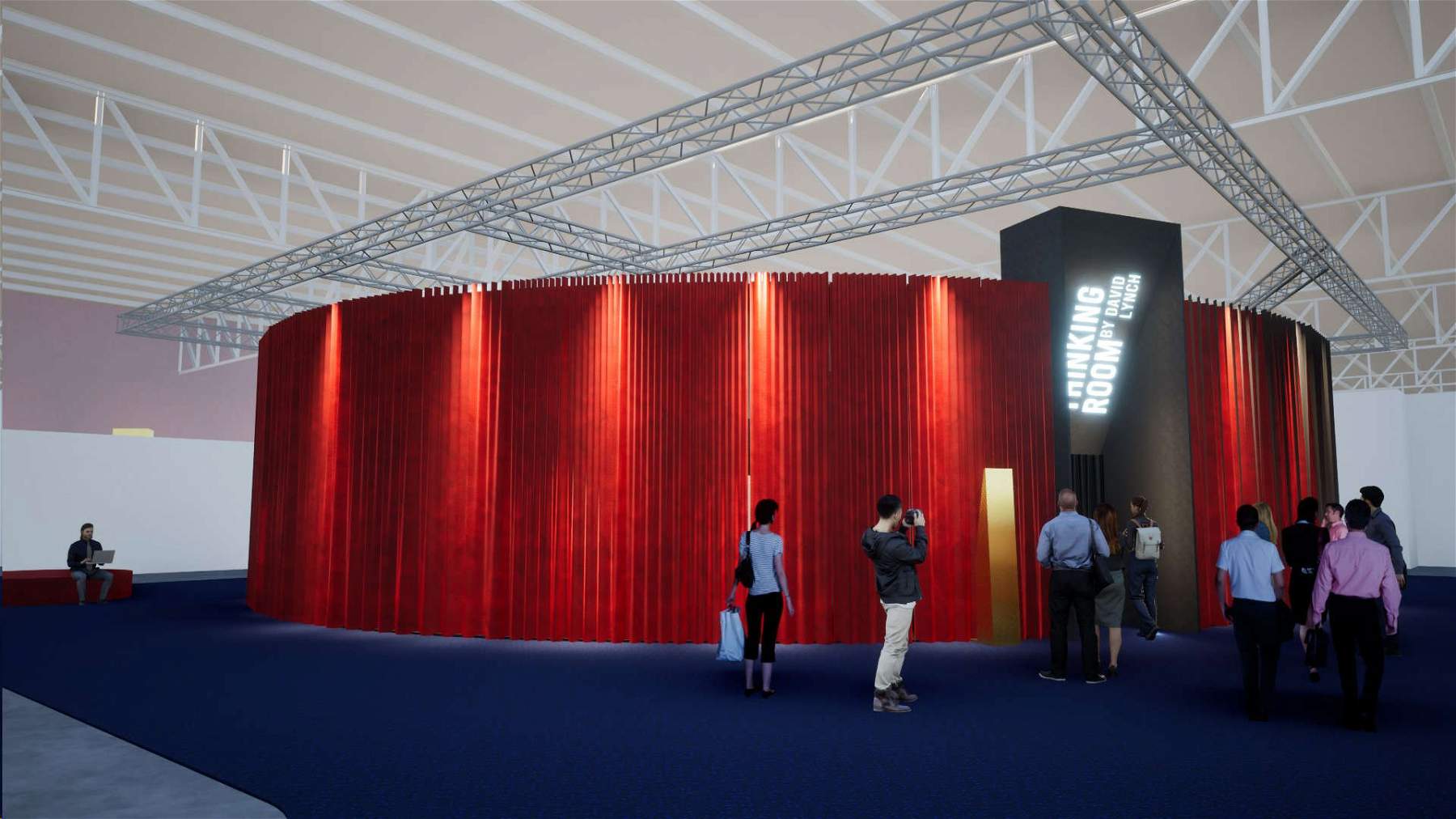At the Salone del Mobile in Milan, there will also be two rooms by David Lynch
There will also be two rooms of the great director David Lynch at the 2024 edition of the Milan Furniture Fair : it is the project Interiors by David Lynch. A Thinking Room. These are two rooms, identical, that stand as symbolic doors to be passed through before immersing oneself in the event, in search of a connection with the space. On the occasion of its 62nd edition, the Salone del Mobile in Milan chose David Lynch, the director of the unconscious, to narrate and reflect on how the production of interiors is able to shape and create environments that will enter into a profound, at times symbiotic and symbolic relationship with those who will live and furnish them. The result is an installation intended to give an intimate and profound experience.
Interiors by David Lynch. A Thinking Room (Hall 5-7) stages-through the scenographic language of cinema and theater-two rooms, relatively small and empty, except for the large central wooden armchair equipped with writing, drawing and painting tools and seven cylinders connecting it to the ceiling, some niches with images chosen by the director, a mirror and a clock.
All around, an undulating curtain that rhythms the walls and marks time, underfoot slats like sea waves, overhead a curved golden ceiling connected to the tubes and the armchair by seven strands of light. The emptiness, however, is only apparent: the rooms are filled with blue, with gold, with light, with silence. David Lynch makes the audience walk through them and experience them - preferably in solitude - just before they come into contact with their opposite: the crowd, the buzz, the multitude of projects on display at the fair. The idea is to free the heart and mind, to drop opinions, deductions, prejudices so that other spaces, other possibilities may be revealed, new thoughts, perceptions, images, sensations may be welcomed. David Lynch comments, “Even to think of being able to imagine a room for thinking is pleasant. A room that helps make it happen. Thinking, I mean.”
Antonio Monda, curator of the project, recounts how Lynch enthusiastically welcomed the idea of creating two spaces to “give away” to those traveling through the event this week; for its part, the Salon knew well how the interiors of the director’s films-and and probably the furniture he builds with his own hands and with which his studio is filled - do not represent a simple landscape, but are a reflection of the state of mind of the protagonists, who live in a condition of perpetual precarious balance. “For Lynch,” Monda explains, “there is nothing inanimate and nothing that does not have an intimate, vibrant vitality. This is evident in everything he creates: in his visionary cinema, in his figurative art and in the furniture he designs. The two Thinking Rooms created for the Salone del Mobile immerse us in a harmoniously accomplished universe thanks to the vital drive of every single detail, and Lynch manages to seduce us by reaffirming that true art does not o!re answers, but asks questions.”
Says Maria Porro, President of Salone del Mobile.Milano: “David Lynch lets us enter his world and his way of thinking. His Thinking Rooms are places that inspire, suggest, send messages. They are places of synesthesia, that is, spaces that offer stimuli that involve multiple senses, different from those that would normally be used to process those stimuli: here, you can ’hear’ blue or ’see’ silence. Here, the protagonist is sensory contamination. Which will then also serve to better interpret the design visions that are outside these boundaries.”
Lombardini22, a leading group in the Italian architecture and engineering scenario, designed the master plan of the positioning and architectural layout of the curvilinear perimeter, which leads to David Lynch’s work, so as to give the rooms the maximum value of scenic impact but, at the same time, ensure good neighborly relations with the exhibitors, not hindering, for example, their visibility. Thus, the rooms envisioned by the director are embedded within two shells, side by side and symmetrical, ovoid in shape. Between the perimeter of the shells, made of a theatrical and cinematic red curtain, and the Thinking Rooms is determined an intermediate space that, through a large, full-height portal, welcomes visitors before allowing the actual entrance to the rooms. It is a soft waiting space of carpeting, velvet and seating, an intimate and scenic backstage. Here, Delfino Sisto Legnani’s signature shots chronicle the process of creating the Thinking Rooms.
The project Interiors by David Lynch. A Thinking Room saw the collaboration of the Piccolo Teatro di Milano, which materially realized David Lynch’s imagery and artistic thoughts. According to a work process developed dynamically along different directions and in several stages, capable of uniting the technical-operational level with the creative one, the Piccolo Teatro thus gave shape to the indications and vision of the brilliant film director.
 |
| At the Salone del Mobile in Milan, there will also be two rooms by David Lynch |
Warning: the translation into English of the original Italian article was created using automatic tools. We undertake to review all articles, but we do not guarantee the total absence of inaccuracies in the translation due to the program. You can find the original by clicking on the ITA button. If you find any mistake,please contact us.





























